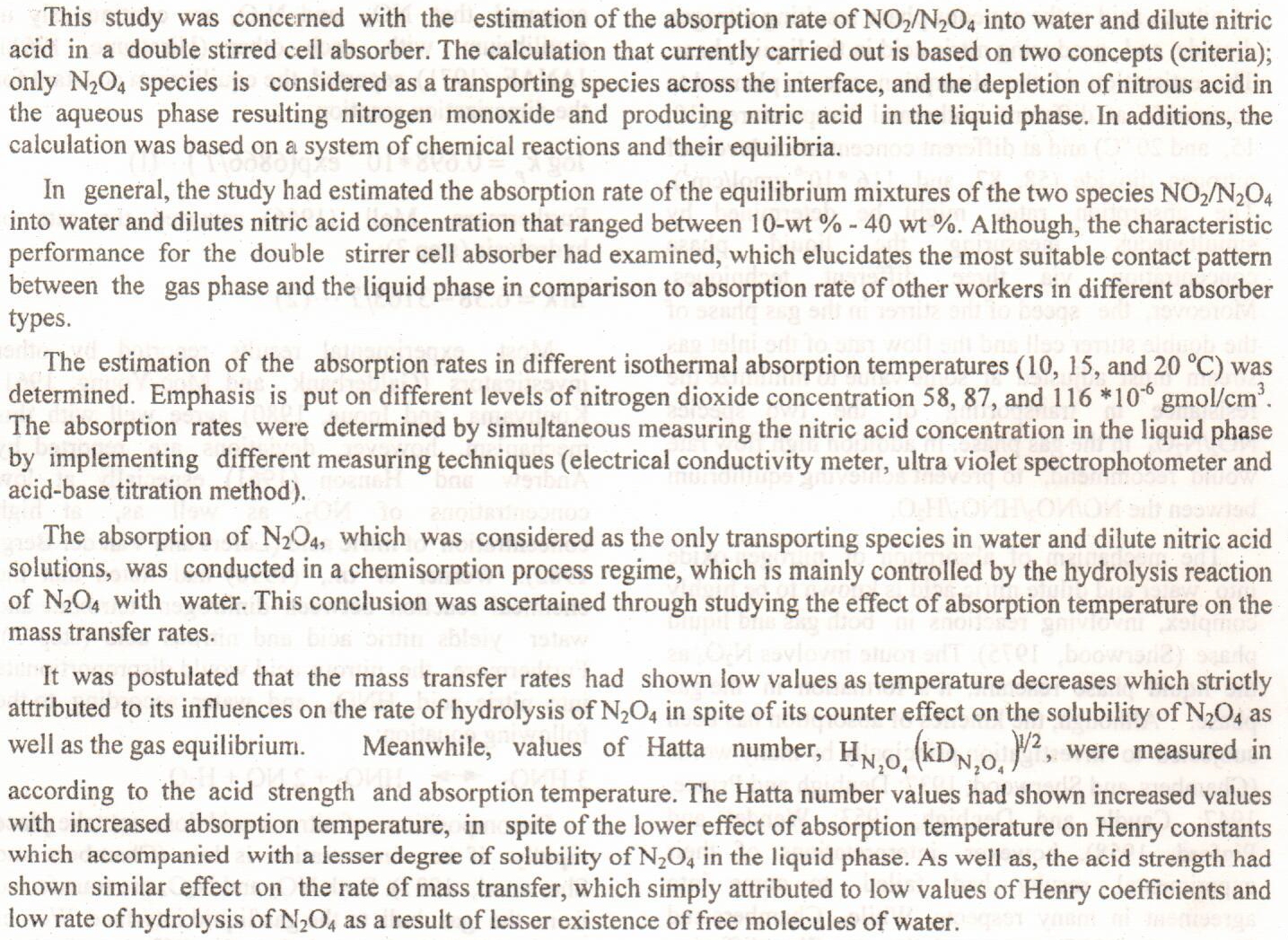
 (3)
(3)
Epoxy (EP) – Silica (SiO2) composites are well known composites used in microelectronic industry . So it is important to study their dielectric behavior under different conditions such as
the presence carbon black (UV absorber) and immersion in the water for 30 days .
Dielectric properties were calculated over the frequency range 102 – 106 Hz for epoxy composites with different weight % of micrometer 1.5μm SiO2 particles (60%, 65% and 70wt%) modified with 0.5wt% silane coupling agent to improve adhesion between EP and SiO2 phases .
Multi-spectral satellite images of the Landsat satellite by the tow sensitive Thematic Mapper (TM) and Thematic Mapper Enhancement (ETM+), which covered the study area located south east of Iraq. In this research; used the sixth thermal spectral band (Thermal Band) for study the water cover in the AlRazzaza Lake located within the province of Karbala. We intended to study the cover a case of the study area, used satellite images showing the status of region during the period from 1990 to 2001 and 2007. From this study we conclude that cover the water of the study area change in sequence case to decrease during these years.
Multi-spectral satellite images of the Landsat satellite by the tow sensitive Thematic Mapper (TM) and Thematic Mapper Enhancement (ETM+), which covered the study area located south east of Iraq. In this research; used the sixth thermal spectral band (Thermal Band) for study the water cover in the Al-Razzaza Lake located within the province of Karbala. We intended to study the cover a case of the study area, used satellite images showing the status of region during the period from 1990 to 2001 and 2007. From this study we conclude that cover the water of the study area change in sequence case to decrease during these years.
In the present study ten samples of bottled water from Baghdad conservative were taken to measure the concentration of radon gas by using nuclear track detector LR-115.The result obtained are varying from(0.033)to(0.007)pCi.l-1and these values are very low than the allowed limits (5) pCi.l-1, and specific activity from bottled water has been calculated which was vary from (0.00027)to(0.00126) Bq.l-1 and these values are very low than allowed limits (0.0123) Bq.l-1 that mean the bottled water was treated with good treatment to decrease the side effect of radon
 (2)
(2)
 (1)
(1)
Thsst researcher problem of delays faced by researchers are all waiting to evaluate their standards by the experts who must take their views to extract the truth Virtual important step first step in building standards whatsoever, then the difference of opinion among experts about the paragraphs Whatever the scope of their functions, leading to confusion in maintaining these paragraphs or delete? Or ignore the views and opinion of the researcher to maintain the same? Or as agreed upon with the supervisor if he was a student? Especially if the concepts of a modern new building.
Therefore, the researcher sought to try to find a solution to her problem to conduct an experiment to test building steps
The apricot plant was washed, dried, and powdered after harvesting to produce a fine powder that was used in water treatment. created an alcoholic extract from the apricot plant using ethanol, which was then analysed using GC-MS, Fourier transform infrared spectroscopy, and ultraviolet-visible spectroscopy to identify the active components. Zinc nanoparticles were created using an alcoholic extract. FTIR, UV-Vis, SEM, EDX, and TEM are used to characterize zinc nanoparticles. Using a continuous processing procedure, zinc nanoparticles with apricot extract and powder were employed to clean polluted water. Firstly, 2 g of zinc nanoparticles were used with 20 ml of polluted water, and the results were Tetra 44% and Levo 32%; after
... Show More (3)
(3)
 (1)
(1)
 (33)
(33)
 (6)
(6)
